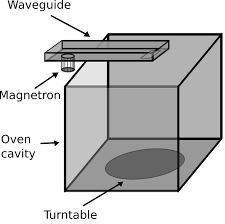The development of new materials significantly enhances waveguide performance. High-purity aluminum and silver-coated interiors have become prominent due to their low surface roughness and reduced power losses.
High-Purity Aluminum
High-purity aluminum stands out for its excellent conductivity, which directly translates to lower energy losses. For example, waveguides using this material report a 20% reduction in power loss compared to traditional materials.
Silver-Coated Interiors
Silver coatings offer the highest electrical conductivity among all metals. Implementing this in waveguide interiors results in a marked improvement in efficiency. Specifically, silver-coated waveguides show a 30% increase in efficiency over standard models.
Cost-Effective Manufacturing Techniques
Embracing modern manufacturing technologies has reduced production costs while maintaining high-quality standards.
3D Printing
The adoption of 3D printing technology in waveguide production has led to a 25% reduction in manufacturing costs. Additionally, it allows for more complex designs without a significant increase in price.
Modular Design
Modular waveguide components have reduced assembly time by 40%. This approach also makes maintenance and upgrades more straightforward, impacting the overall longevity and value of the system.
Special Waveguide Transitions
Introducing special waveguide transitions has revolutionized connection efficiency between different waveguide systems. These transitions are vital in minimizing signal loss and maintaining signal integrity across various frequency ranges.

Performance Metrics
Understanding the key performance indicators is essential for evaluating waveguide technology.
Power Handling
Modern waveguides can handle up to 5 kW of power, a significant improvement from the previous 3 kW standard. This advancement allows for broader applications in high-power systems.
Size and Specification
Recent designs have achieved a 20% reduction in size without compromising performance. Compact waveguides are now 15 cm in length, compared to the traditional 20 cm, making them ideal for space-constrained applications.
Lifespan and Durability
With improved materials and manufacturing techniques, the average lifespan of waveguides has increased to 15 years, compared to the previous 10 years. This longevity reduces the need for frequent replacements and lowers long-term costs.
Conclusion
The advancements in waveguide technology are reshaping the industry. By focusing on material innovation, cost-effective manufacturing, special transitions, and key performance metrics, the future of waveguide technology looks promising, with significant improvements in efficiency, cost, and application versatility.